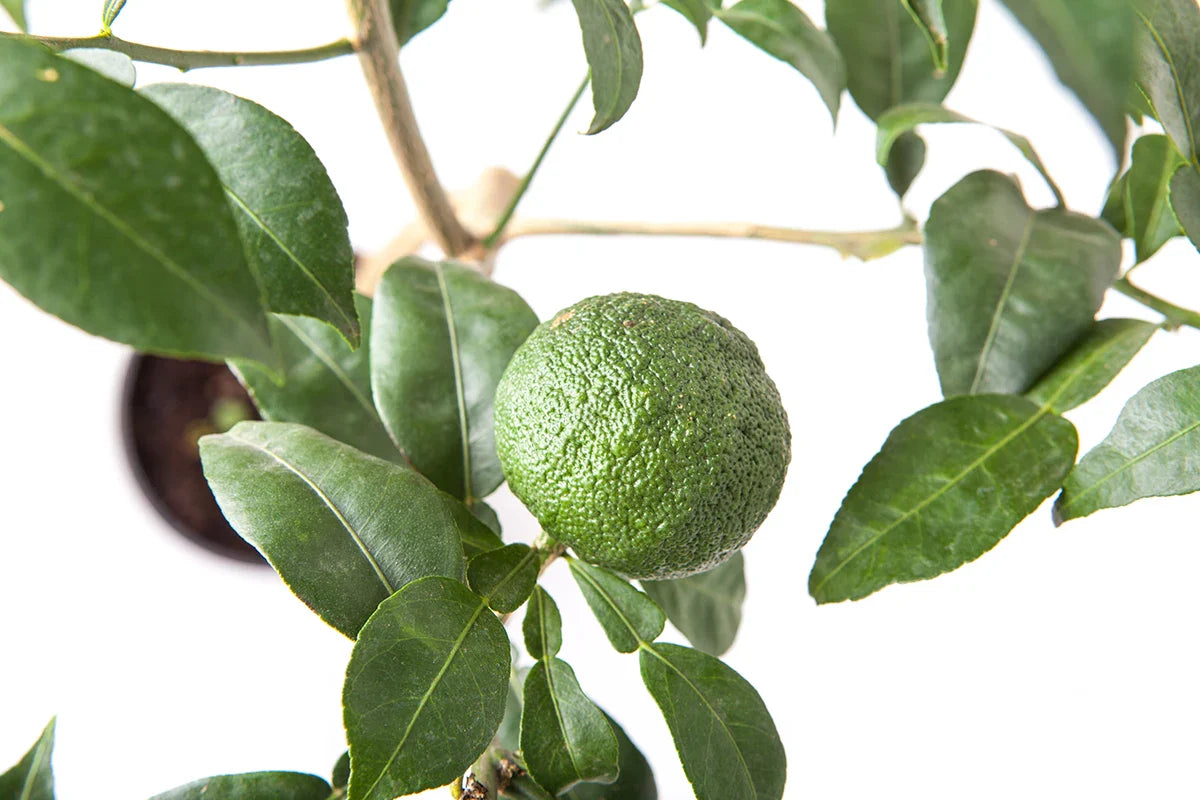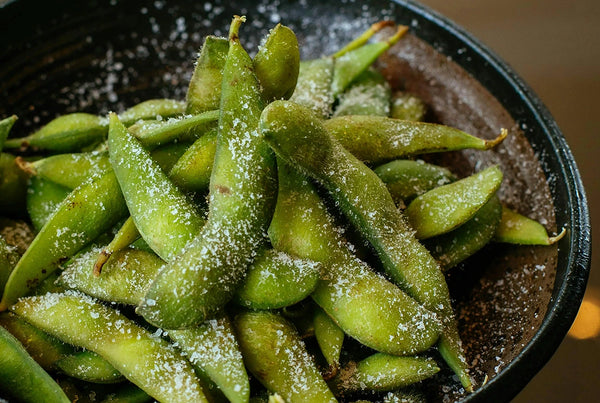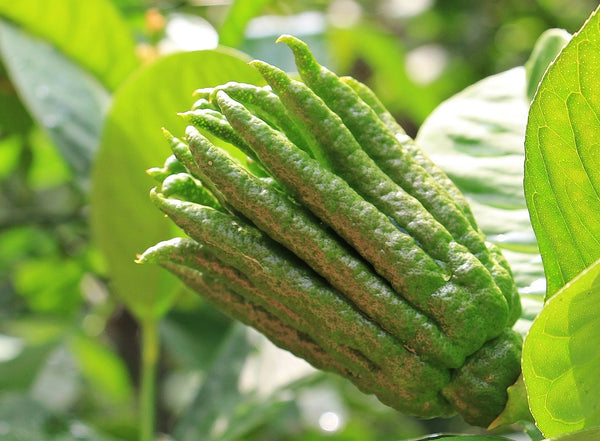
When making traditional Japanese cuisine at home, your dishes are enriched by using authentic Japanese ingredients. And what could be more authentic than growing the ingredients yourself?
Read on to find out the best Japanese vegetables and ingredients to grow, how to grow them at home, and ways to use your fresh home-grown veggies in your Japanese cooking.
Edamame
Edamame beans are one of the most popular Japanese vegetables. Full of antioxidants, protein, and iron, they're a nutritious and delicious starter, side dish or snack.
Instead of having to buy Japanese edamame beans, you can easily cultivate and grow them in your own garden!

The edamame plant thrives in the right conditions. Plant them 10cm apart in well-draining, compost-enriched soil with full sun. Keep them well-watered, and by late summer, you'll harvest 6-8cm pods. You'll be able to tell when they're ready to harvest by their bright green colour, and easily distinguishable beans!
The beans themselves offer a sweet, slightly nutty flavour and a firm texture, making them a delightful addition to a range of dishes, and as a nutritious snack on their own or with steamed rice.
Cook in boiling water, season, and enjoy these pods by squeezing out the peas. They make a classic snack, and are perfect with shishito peppers or in dishes like noodle soup or stir fries. When eating on their own, try tossing them with salt and chilli for a deliciously-seasoned snack.
Buy your first edamame plant to grow from The Wasabi Company.
Shiso
Shiso is an impressively colourful Japanese herb from the mint family. The plant is known by several other names, including perilla, beefsteak plant, Chinese basil and purple mint.
If you can grow basil, you can grow shiso! This plant is both straightforward and rewarding, with impressive yields produced in record time.
Harvest the leaves, and keep the tips and flowers growing throughout the season. Remove and dry all leaves before the first frost and store for adding to sauces, soups and stews, like any other herb.

Leaves and flowers of all shiso plants are edible. The green and bi-colour plants have the strongest flavour, which is similar to mint. The flavour has an earthy depth with hints of basil, cumin, cinnamon, and anise. The leaves can be chopped and tossed into salads in place of basil or mint, and added to soups, stir-fries, and casseroles, or as the quintessential garnish to plates of salmon or sashimi.
The purple leaf is lighter in flavour, and is traditionally used for its colour, most famously to add the distinctive purple to ume fruit in umeboshi - a staple of Japanese cooking.
Shiso's leaves, either dried or fresh, also make an excellent tea. Tea made from purple and bi-colour leaves starts blue before turning dark purple as the colour seeps into the hot water. For an iced tea, pour over ice and add a dash of lemon or yuzu juice to turn the tea bright pink and wonderfully refreshing.
When the flowers start to turn to seed, the buds can be picked and added to soy sauce for an original, fragrant dip for sushi and sashimi.
Buy shiso plants from The Wasabi Company.
Myoga
Myoga, otherwise known as Japanese ginger, is a hardy, clump-forming plant with lush foliage that thrives in UK growing conditions. Although myoga is from the ginger family, only its edible flower buds and flavourful shoots are used in cooking, which are a seasonal delicacy in Japanese cuisine.
Unlike true ginger, the Japanese ginger root is not eaten.
Japanese ginger plants are best placed in rich soil, in partial shade. When planted outside, the foliage will die back in winter and burst into life again in the spring. From mid to late summer, the fleshy, crunchy buds are produced at soil level, or just below, and should be harvested before they open.

In Japanese cooking, fresh myoga ginger is usually served thinly sliced as a garnish, particularly with sashimi, adding a fresh and mild ginger flavour. Fresh slices also work very well in miso soup, or tossed into spring salads.
To make pickled ginger with myoga, it's easily made with vinegar, salt and sugar. If you still have myoga to spare, then slice in half and fry with butter, or deep fry in tempura batter.
Buy your myoga ginger plants from The Wasabi Company here.
Shishito
Shishito peppers are incredibly popular East Asian peppers, that are usually harvested when they turn bright green and reach 3-4 inches long. These slender, finger-like peppers are mildly spicy and are commonly eaten in Japanese cuisine.
They are easy to grow outdoors or in a container. Smaller peppers have a more intense flavour.
Pumpkins
Japanese pumpkins, or Kabocha squash, have a sweet, rich texture and flavour that is similar to a sweet potato and a pumpkin combined. They're great for roasting, or used in tempura. A more experimental flavour pairing would be with anko, or sweet red bean paste.
They are easy to grow, but do require a lot of space.

Citrus trees
We have a huge variety of Japanese citrus trees here at The Wasabi Company!
Yuzu tree
Our hardy and non-hardy yuzu trees, carrying the best known of the Japanese citrus fruits, is a hybridisation of a sour mandarin and the lemon-like Ichang papaeda.
Yuzu juice combines grapefruit and mandarin flavours with unrivalled zest. The skin of the fresh fruit carries a powerful hit of citrus with a striking, floral aroma.
An essential element of Japanese cuisine, yuzu is used to flavour ponzus, soy sauces, miso, honey and chilli paste, as well as traditional Japanese sweets.
European chefs have embraced its famously tart juice in dishes as wide ranging as fish and white meat to sorbets, ice creams and cheesecakes.
Read our article for more information on the Japanese yuzu fruit.

Sudachi tree
Sudachi trees are hardy down to -15ºC once the tree is well established, and gives the very best chance of raising successful citrus trees outdoors in the UK.
The trees flower in spring and form fruit in small clusters which are ready to harvest in late autumn and winter.
Sudachi is a sour citrus used as a flavouring for both sweet and savoury dishes. The juice is almost always used unripe when it has a powerful, zesty aroma with a peppery lime like flavour.
Meyer lemon tree
A meyer lemon tree is a wonderful citrus tree option for your home or garden and is a great variety to grow in the UK. These trees are easy to care for and will thrive in a sunny conservatory or room. They can even handle outdoor conditions in the UK once established.
Meyer lemon trees are particularly popular due to their hardiness and the uniqueness of their fruit - a smaller, rounder fruit that is a delicious blend of lemon and mandarin, making them sweeter than regular lemons.
Perfect with a G&T, served alongside fish or in a killer lemon tart, even the peel is edible and great for cooking, making candied peel, or adding to a refreshing drink for an extra twist of flavour.
Sansho pepper tree
Two great classics of Japanese cuisine in one tree! The sansho pepper tree has both kinome leaves and sansho buds.
Young leaves, Kinome, are harvested for their powerful flavour of citrus and herb which lingers in the mouth with a unique, tingling citrusy spice effect. The leaves are added to dishes of fish, shellfish, chicken, soups and desserts like cheesecake.
Highly aromatic with notes of lemongrass, fresh lemon, mint and verbena, red sansho have a pronounced pepper element that delivers a unique citrus spiciness to the mouth that tingles and lingers. Red sansho have a slightly more floral and rose-like fragrance than the green.
Classically paired with freshwater eel (Unagi), sansho is spectacularly versatile and is equally at home bringing floral herb flavours and a long-lasting, warming feel in the mouth to fish, white meat, curries and stews as it is with fruit and cream desserts.
Szechuan pepper tree
The Szechuan pepper tree is considered to be the Chinese version of the Japanese sansho tree.
The berries are less strongly flavoured and less peppery than sansho, with less of the unique, lingering, citrussy spice. Don’t let that fool you though - both leaves and berries still pack a tremendous punch with a strong flavour of citrus and herb and plenty of peppery spice that tingles and lingers in the mouth.
Use Szechuan pepper in place of black pepper and very soon you will discover myriad ways to enjoy it beyond the classic Chinese dishes where it is the star; Japanese dishes like grilled fish, chicken curries, stews, noodles, soups, beef hot pot and tofu dishes are all livened up with this wonderfully flavourful and punchy pepper with the lingering tingle.
Finger lime tree
The finger lime tree is a shrub like tree that produces small (3-5cm), slender fruits that contain many tiny pearls of sour citrus that pop in the mouth.
Nicknamed 'Citrus caviar' due to the appearance of the pearls, they are coloured dark green on the exterior and light green, turning to pink, as they ripen. The flavour is likened to a cross between lime and grapefruit. The pearls make an excellent topping to raw fish, sushi, sashimi, canapés and work wonderfully well in desserts and cocktails.
Japanese bitter orange tree
The Japanese Bitter Orange is much closer to shrub than a tree and should be treated as such. Take care when planting to consider it will soon be adorned with impressive thorns - so plant where young children will not be tumbling into it!
Japanese bitter orange fruits are green and mature to yellow in autumn, with an orange-like appearance but a surprising downy surface like a peach. Bitter, acidic and filled with many seeds, the fruit is most commonly used for marmalade or tea.
Buddha's hand tree
Buddha's hand trees produce spectacular looking fruits that are prized for their appearance and powerful aroma of both blossom and fruit.
Believed to have originated in India and travelled to China with Buddhist monks, their use is still popular in religious ceremonies. They are a symbol of good luck and happiness, making them a popular New Year's gift in Japan.

Blossom usually appears in the spring, but local environments will influence timing and flowers can appear throughout the year. Buddha's Hands fruits are very dark green initially, even a little purple, and they quickly take on their unique many fingered appearance.
Wildly aromatic, the fruit emits strong citrus notes that emanate from this alien looking centrepiece. Fruits have no juice, just peel and pith! Zest is added to vegetables or in baking and infuses very well to flavour vinegar, salt, sugar, syrup and sweet alcohol like 'cellos. The pith is less bitter than other citrus and can be used, raw, baked, pickled, preserved or infused.
Yuko tree
The Yuko is a lesser-known citrus fruit native to Japan and extremely rare in Europe. The trees resemble the more common yuzu, with only subtle differences to the leaf shape. The rind of the ripened fruit has a sweet scent similar to pomelo and yuzu.
Wasabi plants
It wouldn't be right if we didn't include our beloved wasabi plant in this list!
Wasabi leaves will die back in winter as all the plant's energy travels down into the rhizomes that will be forming at the base of the stems. These precious rhizomes are swollen stems, not roots, and they hold the vital goodness that will carry the plant through winter and see it re-grow with vigour the following spring.
Patience is a virtue with wasabi, and the reward of harvesting and grating your own fresh wasabi paste will be all the sweeter for the two years it can take to yield the famously pungent rhizomes.
Leaves and stems are edible, and these can be picked in small numbers throughout spring and summer to spice up a salad whilst you wait for rhizomes to form.
In March and April long stems holding a cluster of delicately scented white flowers will appear, and these can be eaten raw or fried in tempura batter if you are out to impress.
You will find wasabi alongside a typical Japanese meal, as it works extremely well paired with traditional Japanese food.
You can read our latest blog post on how to grow your own wasabi plant at home.

